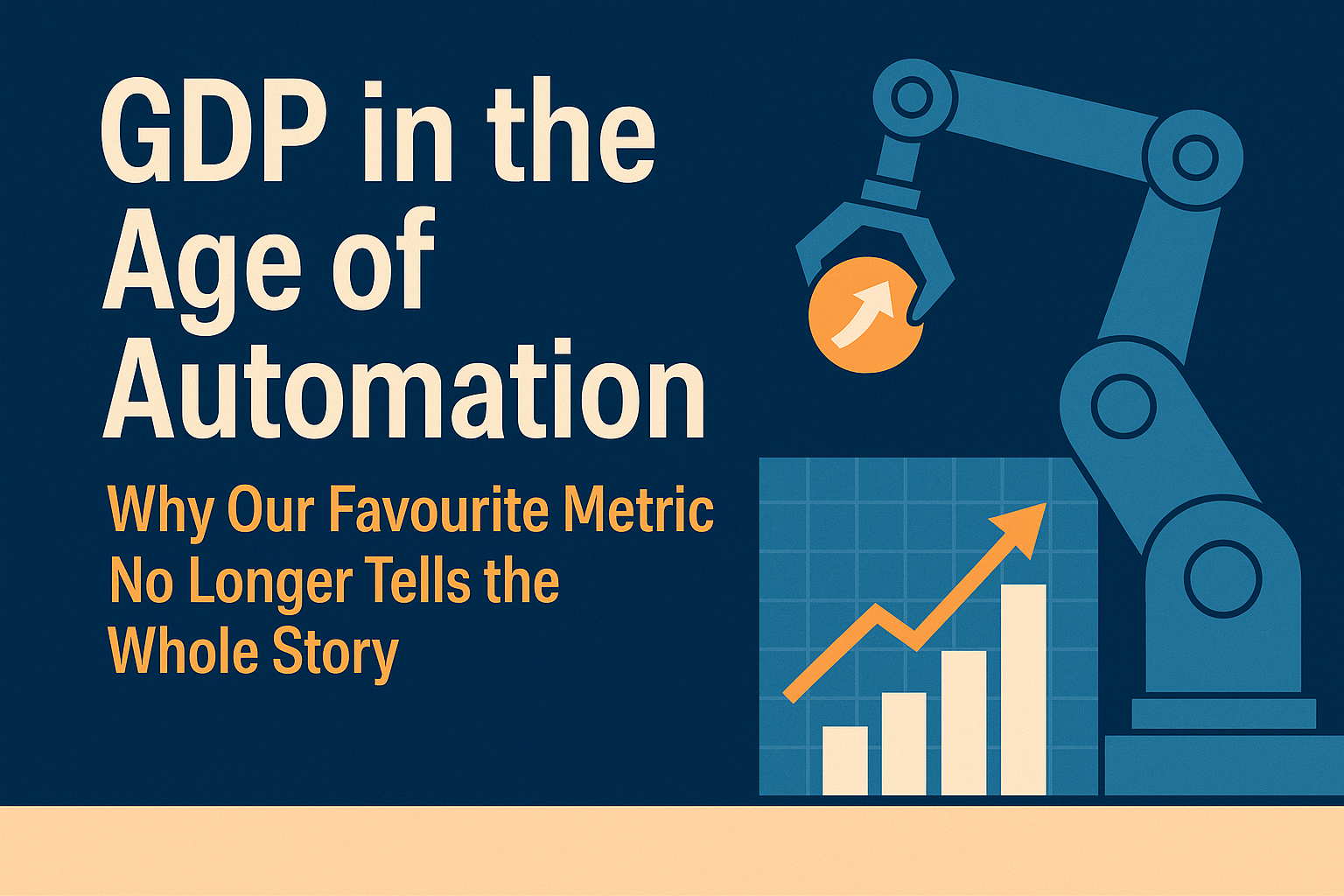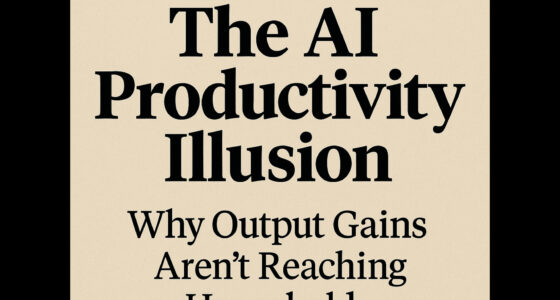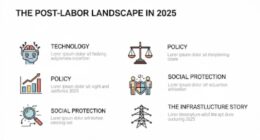Universal Entrepreneurship When Execution Is Automated
Post‑Labor Economics Series • Policy Brief • July 2025
⸻
Executive Snapshot
Humans used to need teams, capital, and months of coding to launch a software venture.
In 2025, agentic AI turns a draft idea into a prototype in hours:
• Devin—the “autonomous software engineer”—fills GitHub repos, writes docs, and pushes PRs while the founder sleeps .
• A quarter of Y Combinator’s current startup batch say 95 % of their code is AI‑generated .
• Microsoft’s Azure AI Foundry lets enterprises spin up domain‑specific agents that chain code, marketing copy, and sales collateral in a single prompt .
When execution costs trend toward zero, ideas become the scarce asset.
Policymakers must prepare for an explosion of micro‑firms, thin moats, and IP churn.
Tech executives must defend moats that no longer rest on headcount or even speed but on data, distribution, and trust.
⸻
1 | Evidence of the Great Unbundling of Execution
Proof Point 2025 Data
Coding agents outperform juniors Devin solves 13.8 % of SWE‑bench GitHub issues autonomously—state‑of‑the‑art for an agent .
Startups built by AI 25 % of YC W25 cohort have “almost entirely AI‑generated codebases” .
No‑code AI tools mainstream Platforms like BuildFire AI generate production mobile apps; sign‑ups grew 280 % YoY .
Enterprise adoption Fujitsu, NTT DATA automate proposal writing with agent stacks on Azure .
Investor behaviour $2 bn seed round for Thinking Machines Lab—pre‑product, team of < 50—shows capital chasing ideas plus elite talent, not execution capacity .
⸻
2 | Macro‑Economic Implications
Channel Short‑Term (2025‑27) Medium‑Term (2028‑33)
Firm formation 3–5× surge in micro‑startups as barriers plunge; business‑registration systems strain. High churn: survival rate drops to 15 % at year 3 as competition saturates.
Employment structure Rise of “solo capitalist” founders contracting AI labor; downward pressure on entry‑level jobs. Two‑tier labor market: orchestrators vs. service workers; middle coding roles shrink.
IP saturation Patent offices receive 4× more provisional software patents; backlog risk. “IP inflation” devalues patents; trade secrets + brand gain importance.
Product prices Software and digital‑service prices deflate (‑30 % CPI component by 2030). Goods markets follow as robotic production scales (article #2 flywheel).
GDP Measurement Twist
Traditional metrics count firm output, not firm turnover; policymakers could misread creative‑destruction churn as stagnation if deflators lag.
⸻
3 | Regulatory & Fiscal To‑Do List
3.1 “One‑Prompt Company” Registration Portals
• Why: Stripe Atlas + AI agents slash incorporation time to ≈ 10 minutes.
• Action: Governments offer API‑first business registry with instant tax IDs and AI‑readable compliance guides.
3.2 Dynamic IP Framework
• Fast‑lane patents: 30‑day AI‑assisted prior‑art search for software claims; provisional rights lapse in 12 months unless commercial traction shown—filters noise.
• Data‑moat safe harbors: Allow firms to license proprietary datasets with privacy guard‑rails, recognizing data—not code—drives defensibility.
3.3 Micro‑Enterprise Tax Simplification
• Levy turnover tax bands (< $500 k; $500 k–$5 m) instead of complex payroll/income rules—mirrors proliferation of AI‑solo shops.
3.4 Labor‑Platform Oversight
• Mandate disclosure when > 50 % of service delivered by AI; require consumer opt‑out or pricing clarity (avoids hidden “bot dumping”).
⸻
4 | Corporate Strategy—Defending Moats in an Idea‑Abundant World
Old Advantage Erosion Driver Strategic Pivot
Coding armies Agentic AI writes prod‑grade code Unique data & distribution agreements
Time‑to‑market Idea → prototype in hours Community & brand lock‑in; first‑party ecosystems
Capital intensity Cloud agents cheap Energy & compute contracts, sub‑5 ¢/kWh renewable PPAs
IP portfolio Patent glut Privacy & compliance guarantees as differentiators
Board checklist (next 12 months):
1. Map commodity functions (code, design, marketing) vs proprietary (data, regulatory approvals).
2. Acquire niche communities—loyal eyeballs can’t be cloned by agents.
3. Adopt “prompt‑to‑prod” pipelines internally to keep cost parity with micro‑upstarts.
⸻
5 | Labor, Education & the New Skills Barbell
Tier 2025 Demand Trend Policy Response
Orchestrators / Prompt engineers / Product thinkers +40 % postings YoY (LinkedIn data) Subsidize “AI entrepreneurship bootcamps”; integrate agent ops into MBA curriculums.
Mid‑skill coders / designers –15 % openings Transition vouchers to upskill into AI ops or data governance.
AI Safety & Governance professionals +60 % demand Fast‑track university micro‑degrees; international credential reciprocity.
⸻
6 | Risk Matrix
Risk Likelihood Impact Mitigation
Codebase fragility from AI‑generated code High Medium—tech debt crises Mandatory code‑audit bots; insurers price premium on AI‑generated LOC ratio.
IP trolling with mass‑generated patents High High—innovation gridlock Dynamic IP regime (Section 3.2).
Privacy breaches via mass bot startups Med High—consumer distrust Data‑provenance watermarks; tiered penalties.
Market glut / bubble in AI‑micro firms High Medium Investor disclosure rules; stress tests akin to fintech.
⸻
7 | Global Equity Angle
Without guard‑rails, wealthy ecosystems monopolize data and compute, turning emerging‑market entrepreneurs into mere resellers of AI services.
• Proposal: Multilateral Idea‑Credit Facility—development banks seed $10 bn compute vouchers and mentor networks for under‑represented founders.
⸻
8 | Conclusion—From “Idea Guys” to Idea Economies
When anyone with a browser can summon armies of tireless software agents, ideation becomes the main factor of production.
Societies that lower incorporation friction, modernize IP, and democratize compute will flourish; those that cling to payroll‑based tax and human‑hour licensing risk stagnation.
Policymakers: Build API‑first regulation for a million‑company decade.
Executives: Shift value capture from execution to ecosystems of trust, data, and brand—or be disrupted by a prompt.
Get Involved: I’m drafting an Idea Economy Governance Playbook with regulators, accelerators, and cloud providers. Subscribe at thorstenmeyerai.com/newsletter to review and co‑author.
⸻
Citations
1. Sequoia Capital, “AI 50 2025: Agents Move Beyond Chat.” Apr 2025.
2. Cognition AI, “Introducing Devin—the First AI Software Engineer.” Mar 2024.
3. TechCrunch, “A Quarter of YC W25 Startups Have 95 % AI‑Generated Code.” Mar 2025.
4. Microsoft Blog, “Age of AI Agents—Azure AI Foundry.” May 2025.
5. BuildFire, “Top No‑Code AI Tools of 2025.” Feb 2025.
6. Business Insider, “OpenAI’s Bob McGrew on ‘Vibe Coding’.” Jun 2025.
7. Financial Times, “Thinking Machines Lab Raises $2 bn Seed.” Jun 2025.
(Additional survey and LinkedIn hiring data available upon request.)









